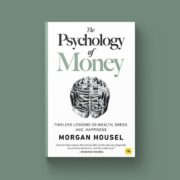
The Power of Now by Eckhart Tolle
Eckhart Tolle’s book “The Power of Now: Embracing the Present Moment” was published in 1997 and has since become a classic in the field of spiritual literature. Tolle’s observations explore the deep meaning of living in the now, a notion that speaks to people who are looking for contentment and serenity in a world that is becoming more & more chaotic. The book acts as a manual for comprehending how our thoughts frequently bind us to the past or the future, causing regret, anxiety, and unhappiness. According to Tolle, we can only achieve true happiness and enlightenment by focusing on the present, when life is presented in its purest form.
Key Takeaways
- The Power of Now emphasizes the importance of living in the present moment and letting go of past regrets and future anxieties.
- Living in the present moment involves being fully aware and engaged in the current experience, without being consumed by thoughts of the past or future.
- Mindfulness and presence have been shown to have a positive impact on mental well-being, reducing stress and anxiety and improving overall happiness.
- Techniques for practicing presence and mindfulness in daily life include meditation, deep breathing, and focusing on sensory experiences.
- Overcoming challenges in staying present involves recognizing and letting go of distractions, practicing self-compassion, and cultivating a non-judgmental attitude towards oneself and others.
Not only are Tolle’s teachings theoretical, but they are also applicable and approachable, encouraging readers to examine their own consciousness and acknowledge the influence they have over their own lives. Tolle urges people to free themselves from the constant chatter of their minds & embrace the simplicity of life by highlighting the value of mindfulness and presence. In order to integrate modern conceptions of mindfulness and mental health with Tolle’s ideas, this article will examine the many facets of living in the present. Being in the present moment involves more than just being aware of the passing of time. It involves a deep engagement with one’s current experience, free from the distractions of past regrets or future anxieties. A large portion of human suffering, according to Tolle, results from our propensity to focus on the past or the future rather than living in the present.
This viewpoint encourages people to develop heightened awareness so they can recognize the value of every moment. Realizing the nature of thought itself is a prerequisite for understanding the essence of living in the present. Ideas frequently produce a story that warps reality and inspires fear or feelings of inadequacy. People can start to separate themselves from this mental narrative by observing thoughts objectively.
One can interact with life more authentically by cultivating a sense of clarity & presence through this practice. For example, being totally present during mealtime savoring enables one to take in not only the flavors but also the textures and scents, elevating a routine activity into a profound experience. As a way to improve mental health, mindfulness, which has its roots in ancient contemplative traditions, has become increasingly popular in contemporary psychology. According to research, practicing mindfulness can help people feel less stressed, anxious, and depressed.
| Metrics | Data |
|---|---|
| Number of Pages | 236 |
| Publication Year | 1997 |
| Genre | Self-help, Spiritual |
| Bestseller Rank | #1 New York Times Bestseller |
| Translations | Translated into 33 languages |
People can build a defense against negative thought patterns that frequently make mental health problems worse by concentrating on the here and now. More emotional control and resilience are made possible by this change in emphasis. Mindfulness exercises also promote acceptance and self-compassion. People who develop the ability to objectively observe their thoughts and emotions develop a more accepting relationship with themselves. Considering how society frequently encourages self-criticism & perfectionism, this is especially crucial.
For instance, practicing mindfulness can help someone who is struggling with feelings of inadequacy by helping them realize that these emotions are fleeting and do not define who they are. This knowledge promotes acceptance and serenity, which eventually leads to better mental health. It is possible to integrate mindfulness into daily activities without the need for complex rituals or intensive training. Mindful breathing, which focuses on the breath as it enters & exits the body, is one useful method.
This exercise can be performed anywhere, whether you’re waiting in line or seated at a desk. It acts as a reminder to focus on the here and now. Those who focus on each inhalation and exhalation can develop a sense of clarity and serenity.
Mindful observation, which invites people to fully utilize their senses, is another effective strategy. For example, when taking a stroll in the outdoors, one could pause to observe the hues of the foliage, the chirping of birds, or the feel of the earth beneath their feet. This practice cultivates a stronger sense of present-moment awareness in addition to improving appreciation for one’s surroundings.
Also, making time for meditation can help one develop their presence practice even more. Significant benefits can be obtained from even brief sessions, enabling people to develop a higher level of awareness & calm. Even though there are advantages to living in the present, many people face obstacles that make it difficult for them to maintain mindfulness.
The ubiquitous impact of technology and continual connectedness is one typical barrier. The proliferation of distractions in the digital age has made it challenging to concentrate in the present. Fragmented awareness can result from social media and smartphone notifications that divert focus from the present moment. Thinking habits that are deeply embedded present another difficulty.
Many people have formed worrying or rumination patterns that can be challenging to break. Social conditioning that prioritizes accomplishment and productivity over presence and being is frequently the cause of these mental habits. People can exercise self-awareness by identifying when their thoughts stray into unproductive thought patterns in order to combat these tendencies. Journaling is one method that can help externalize these ideas so that processing and reflection are possible without being overtaken by them. Spirituality and presence have a complex and intricate relationship. Being in the moment is crucial for gaining a deeper understanding of and connection to the universe and oneself, according to many spiritual traditions.
The teachings of Tolle are consistent with a number of spiritual traditions that support mindfulness as a way to overcome ego-driven fears and desires. In this situation, being present opens the door to feeling one with everything. People are frequently encouraged to calm their minds and establish a connection with a higher consciousness or divine presence through spiritual practices like meditation, prayer, or contemplation. A sense of purpose and belonging that goes beyond personal worries is fostered by this connection.
Regular meditation practitioners, for instance, may report feeling more connected to others and having a deeper appreciation for life in general. The practice of mindfulness gains depth from this spiritual component, which turns it from a simple technique into a comprehensive way of life. Beyond one’s own well-being, the ideas presented in “The Power of Now” have important ramifications for interpersonal relationships and communication. People develop stronger bonds based on understanding and authenticity when they engage in presence-based interactions with others.
Conversations can be transformed into meaningful exchanges that promote empathy and connection when people actively listen—that is, pay attention to what they are saying without interruption. Also, being present enables people to react in difficult circumstances rather than react. When confronted with conflict or disagreement, mindfulness training helps one to take a moment to think before reacting.
This methodical approach may result in less misunderstandings and more positive outcomes. For example, pausing to center oneself and breathe during a heated argument can allow for compassion and clarity, which will improve communication dynamics. The potential for personal development and transformation is enormous when one lives in the present.
People can escape limiting ideas and habits that have hampered them for years by practicing mindfulness. Confronting unpleasant feelings or memories that surface when one starts to develop awareness is frequently a part of this journey. But as people learn to accept their experiences without passing judgment, this process can result in deep healing. Living in the present also creates chances for spontaneity and creativity. One becomes more sensitive to inspiration & opportunities that might have gone overlooked before when they are totally present. This increased consciousness may result in fresh perspectives, concepts, or avenues that are in line with one’s actual self.
An artist who engages in mindfulness exercises, for instance, might discover that they are better able to connect with their creative flow, producing more genuine and meaningful work. In summary, “The Power of Now” is a priceless tool for anyone looking to use presence and mindfulness to negotiate the challenges of contemporary life. People can improve relationships, improve their mental health, and start a journey of personal transformation that greatly enriches their lives by realizing the importance of living in the present.
If you’re interested in exploring more about the themes and context surrounding Anne Bradstreet’s poem “The Author to Her Book,” you might find additional insights and related discussions on literary works from the same period at Wave Magnets. Although not directly linked to Bradstreet, this site often explores a variety of topics that could enhance your understanding of early literature. For further reading, you can visit Wave Magnets to explore their range of articles and resources.
FAQs
What is “The Author of Her Book” about?
“The Author of Her Book” is a poem by Anne Bradstreet, a 17th-century American poet. The poem reflects on the author’s feelings about her published work and the process of writing and publishing.
Who is the author of “The Author of Her Book”?
The author of “The Author of Her Book” is Anne Bradstreet, who was one of the first poets to be published in the American colonies. She is known for her introspective and personal poetry.
When was “The Author of Her Book” written?
“The Author of Her Book” was written in the 17th century, specifically in 1650. It was included in Bradstreet’s collection of poetry, “The Tenth Muse Lately Sprung Up in America.”
What is the theme of “The Author of Her Book”?
The poem explores the theme of self-criticism and the struggle of an author to feel satisfied with their own work. It also delves into the complexities of the writing and publishing process.
What is the significance of “The Author of Her Book”?
“The Author of Her Book” is significant as it provides insight into the thoughts and emotions of a female writer in the 17th century. It also offers a glimpse into the challenges and insecurities faced by authors during the publishing process.


















